Sleep: For Better or For Worse

You’ve heard it before, but it bears repeating: sleep is one of the most integral parts of our well-being. Our bodies require sleep to heal and to grow, and our minds need it to operate at our highest capacity and efficiency. Given the demands and distractions of modern life, however, many people operate at a disadvantage because they are sleep deficient.

While eight hours of sleep is the recommended average for most adults, individual needs vary. Even so, studies have determined that sleeping only five hours (or less!) at night means that your performance the next day is about the same as if you were completely inebriated. So….not good!
Cause and…
The hours that we work, the worries we have about our loved ones (including our earth!), and our obsessive use of electronic devices all contribute to sleep instability.
…Effect
Regular sleep deficits have been associated with high blood pressure, type II diabetes, heart disease, depression, cancer, obesity, and increased risk of death. No joking matter!
But how do we break the cycle of scrolling through the feed in our phones, working on our computers until the wee hours, and depriving ourselves of the one thing that is known to make us function better?
Toward better sleep
Begin winding down an hour or so before you want to be asleep. Your hour before bedtime is just as important as the time you would use to prepare for an important meeting; get yourself ready for your sleep date.
Here are three simple things you can do to reboot your sleep habits:
1. Recognize the things you may be doing to sabotage your sleep.
All of the following can make it harder to fall asleep and get high-quality rest.
- Are you exercising at the wrong time? Exercise raises your energy level, and if your workout is too close to bedtime, you may find it hard to fall asleep. Schedule vigorous exercise earlier in the day.
- Do you take your phone or other electronic devices to bed with you? They stimulate the brain and may keep you up.
- Do you start obsessing over your concerns as you lie in bed?

2. Set up routines that support better sleep.
- Turn off the TV, power down your phone, close your laptop.
- Take a shower or bath to clean the day off your body and calm your mind.
- Listen to some quiet, relaxing music, read a book, or meditate.
- Lower the lights to create a cozier and less stimulating environment.
- Maybe even do a couple of yoga poses to prepare for sleep. (More on that later.)

3. Establish ground rules.
You know your own habits better than anyone else, so customize your ground rules to short-circuit your own self-sabotaging actions. Write them down and post them on your bathroom mirror if necessary.
- Remind yourself to turn your phone off and leave it in another room so you’re not tempted to check it as you settle into bed. Or worse yet, in the middle of the night.
- Leave work-related reading, paperwork, or other materials in a different room. Don’t take it to bed with you. Remember that this is not a time to do work.

But…my phone is my life!


I know what you’re going to say: you use your phone to listen to music or play white noise to help you relax. Or you use it to set alarms. I get it. If you absolutely must have your phone in your bedroom for these reasons, turn on Airplane Mode so your device will be completely offline while you sleep.
If you’re not comfortable with a total (but temporary) divorce from the outside world, choose the Do Not Disturb mode, which you can customize with time periods during which you will not receive notifications. Some phones allow you to set specific permissions for calls to come through during the Do Not Disturb phase. You may even be able to allow calls or text only from certain contacts. This is a smart way to have the peace of mind of knowing that your nearest and dearest can reach you if there’s an emergency. Everything else can wait until morning.
If your only reason for bringing your phone to the bedroom is to use its alarm function, then consider buying an inexpensive alarm clock. If you have an old phone lying around from before you upgraded to your current device, use it as an alarm clock. Strip out all the apps and notifications, turn off the wifi or put it in Airplane Mode, and use it only for alarms or playing downloaded music or white noise.

What happens if I wake up in the middle of the night?
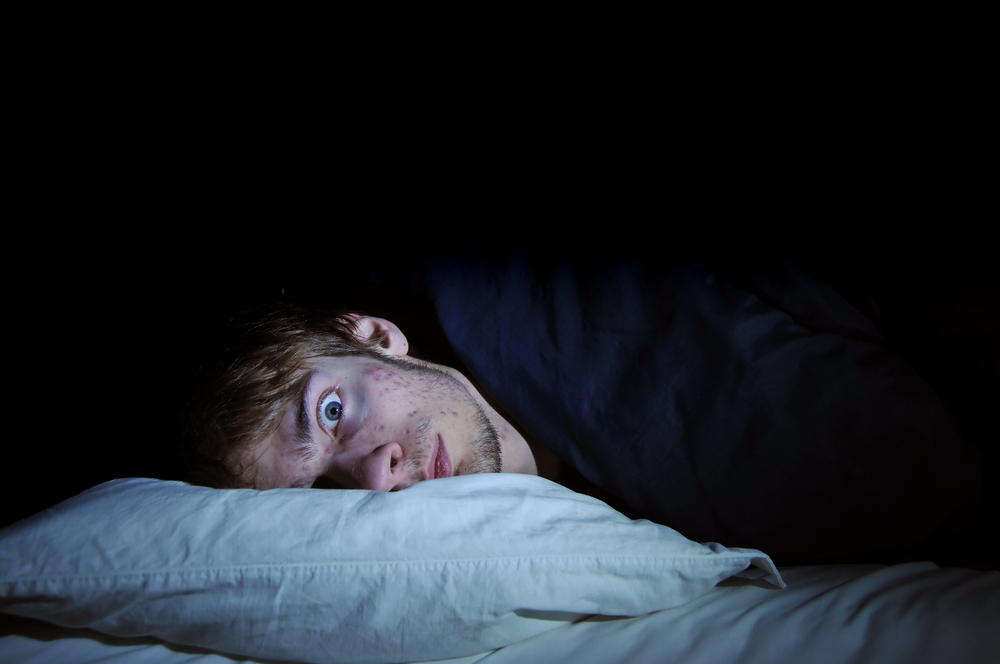
No ifs about it. You will wake up. It’s a natural part of our sleep patterns to wake up briefly between cycles. Don’t despair, don’t obsess on why you’re awake, don’t fret about getting back to sleep. If you wake up, change your position or even get up and walk to a different room and back. This can go a long way to getting you back to sleep. If you find yourself awake in the middle of the night, try doing some conscious breathing (see below). Keep a notebook or journal beside your bed, and write down whatever is on your mind, then let it sit until morning. Or read something incredibly dull. A household appliance manual, for instance, can be a real snoozer!
Yoga before bed?
Yes! As long as you’re not doing a vigorous practice or a lengthy one, yoga can actually help you fall asleep. Take a few minutes (10 to 15 should be sufficient) to do a couple of yoga poses to calm you down and get you ready for bed.
What poses should you do? Here are a few that I recommend. Select two or three as a wind-down routine and see how they affect you. Mix it up as needed:
Ardha Prasarita Padottanasana (Half Wide-Angle Standing Forward Bend)
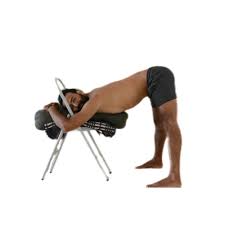
Stand alongside and facing your bed. Step your feet wide apart (aim for three to four feet) and hinge forward from the hips. Depending on the height of your bed, you might rest your hands, your forearms, or even your head on your bed. Stay in this position for three to five minutes.
Adho Mukha Svanasana (Downward-Facing Dog Pose)
Come to hands and knees on the floor. Position your hands directly beneath your shoulders. Step your feet back into plank and keep your hands and feet where they are as you lift your hips back and up. Feel free to bend your knees a little so that your spine can lengthen with greater ease. Remain in the pose for ten breaths.

Eka Pada Rajakapotasana (Pigeon Pose) with forward release
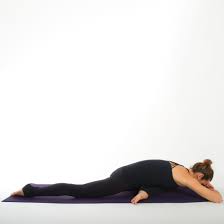
Come to hands and knees. Draw your right knee forward and to the outside of your right hand. Extend your left leg straight back from your hip with the top of the foot resting on the floor. Your right foot can angle back toward your left hip or you can swing it forward a little, depending on what’s comfortable for you. Walk your hands forward so that your torso extends over your front leg. Come down onto your elbows or drop your head onto the floor, a block, or your folded arms. Remain here for at least ten breaths, then gently emerge and repeat on the second side.
Apanasana (Knees-to-Chest Pose)
Lie on the floor (or in your bed) and hug your knees into your chest. You can place your hands either behind your knees or in front of them. Remain in the pose for ten breaths.
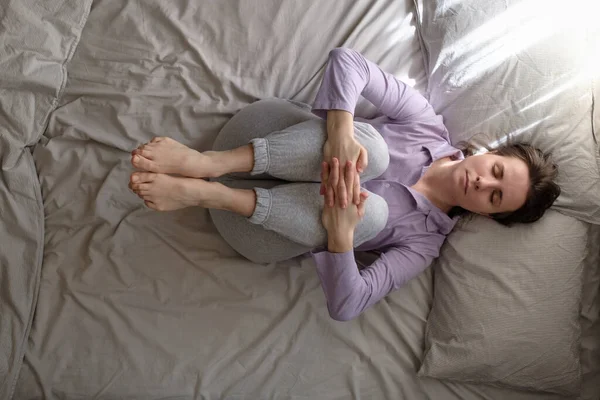
Jathara Parivartanasana (Revolved Abdomen Pose)
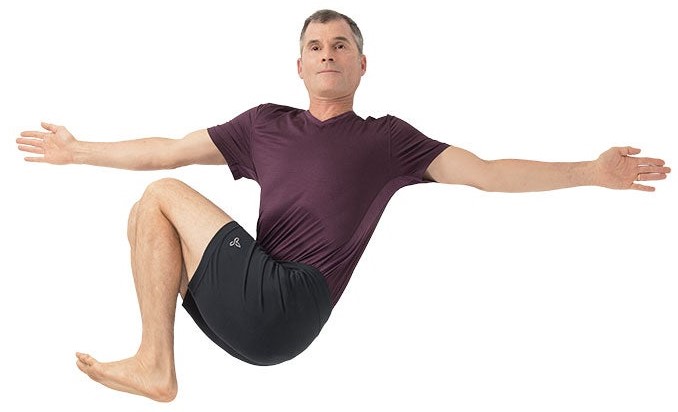
Lie on the floor with your arms extended out to the sides. Draw your knees toward your chest, then drop them over to the right side, bringing your torso into a twist. Remain in the twist for five to ten breaths, then bring your knees back up to center. Repeat to the left side.
Viparita Karani (Legs up the Wall Pose)
Lie on the floor with your legs extended and your feet resting on the wall. Scoot your butt closer to the wall, but it doesn’t need to touch the wall. Just be as close as you can while extending your legs comfortably to rest your heels against the wall. If you don’t have open wall space, you can do this against a closed door, but make sure no one will open the door while you’re in the pose. Lock the door if you need to. Stay for five minutes or more. If you do no other pose before bed, do Viparita Karani. It’s one of the best yoga poses for stimulating the relaxation response in the body.
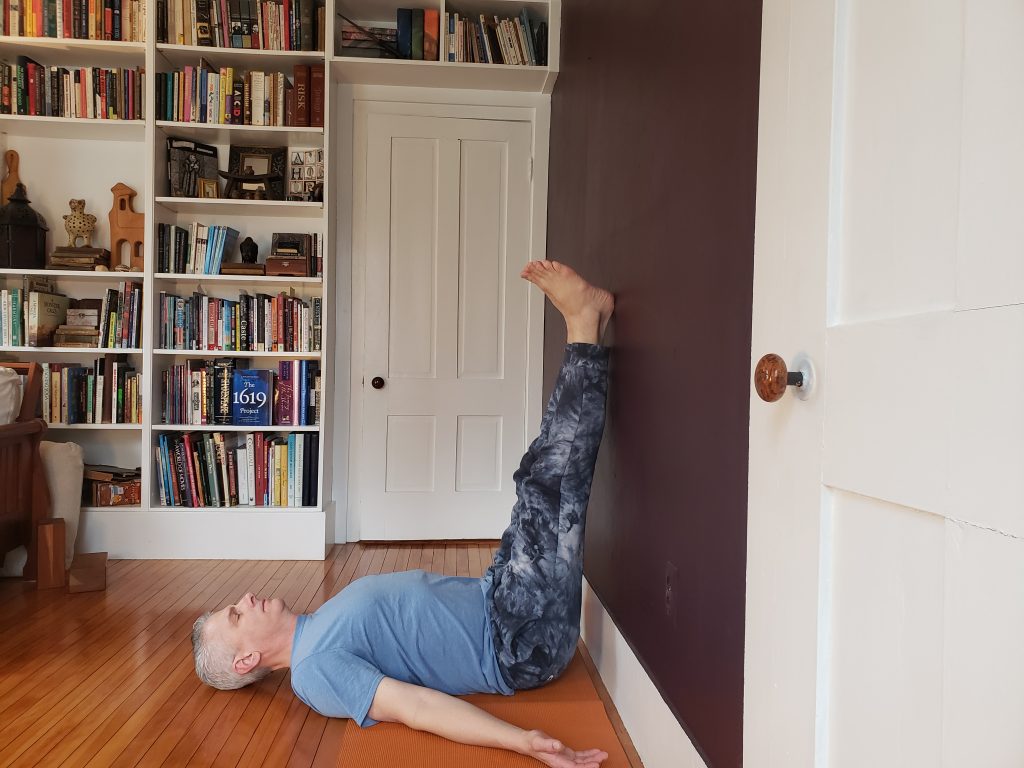
Take a breath
Whether you do some yoga before bed, lie in bed listening to some gentle music, or find yourself awake in the middle of the night, conscious breathing can help you focus and thereby diminish distractions, especially from your own thoughts.
And you don’t have to do any complicated techniques. Basic breathing is all you need. Here’s what I suggest:
Breathe in deeply and observe how the breath expands the torso. Slowly release the breath. Continue breathing in this way and try to keep your attention just on the process of breathing. If you’re so inclined, you could breathe to a count. For instance, breathe in on a slow count of three, and exhale on a slow count of three or four. Tip: A longer exhalation in relation to the inhalation can relax the body and mind.
Sleep well and get up well
If you’re prone to occasional sleep difficulties, try some of the suggestions above. Reset your bedtime routine and allow yourself a period of a week or more to adjust to it.
Coming up in my next blog:
More tips for better sleep, but these are all about food!
Lindel Hart teaches yoga online for PerfectFit Wellness. He lives in Western Massachusetts and teaches at Deerfield Academy, a private residential high school, as well as at Community Yoga and Wellness in Greenfield, MA. Visit his website, Hart Yoga.




